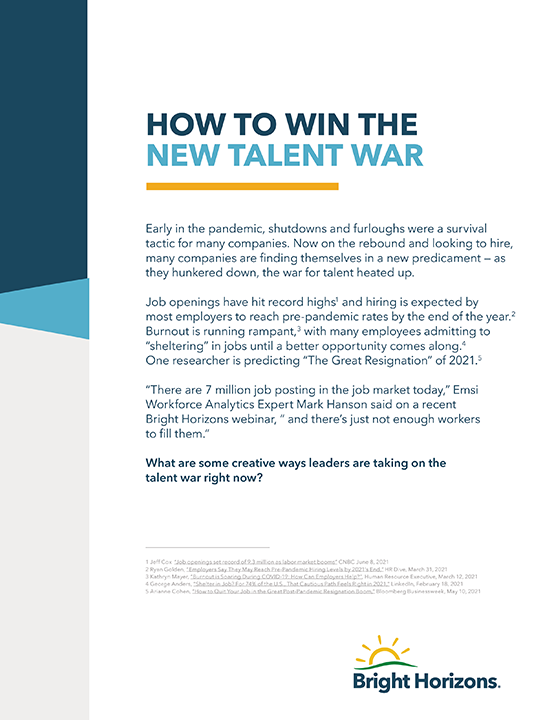Suppose you have a great tool that could do wonders for your workforce.
It’s cost effective; supports productivity; and could be a key asset for multiple initiatives – hiring, retaining, and promoting your employer brand.
And here’s the kicker: it’s good for people; and they like it.
All you have to do is use it strategically and you’ll reap the rewards.
But instead of actively promoting it, you figure it will sell itself. So you drop this great tool under the long list of “resources” on your employee portal and wait for people to find it. Not surprisingly, it doesn’t deliver the rewards you expect.
Wouldn’t that be kind of a shame?
Yet that’s all too often the fate of education programs – strategic tools that could do great work if only they were viewed through the right lens. And right now, education is in the spotlight.
“Education is a hugely important benefit,” industry analyst Josh Bersin told us on our recent webinar about winning the talent wars. With resignations and open jobs at or near record highs, training gives employers a dependable and attractive alternative to filling positions, satisfying employees’ desire for career growth by guiding them toward key roles. Even better, research shows employees are hungry for it, making it a carrot for recruitment and retention as well as skills.
The hitch? “A lot of companies look at it like a benefit and that’s it,” says Josh. “So in our long, long list of benefits, there’s a tuition reimbursement program somewhere on the list and nobody sees it.”
Shifting that – moving it out of benefits and into talent strategy – can have an enormous impact, allowing you to actively identify open positions and train people toward them. And it’s just one shift Josh says employers can make to maximize education toward critical hiring goals.
“If you’re going to proactively promote it as a career enhancement,” says Josh, “make sure the people who go through these programs are visible to others.”
“If you’re not doing that, you’re not really advancing the issue.”





